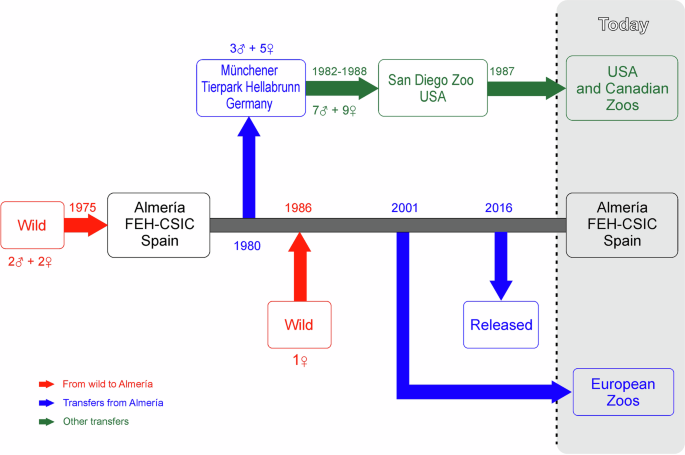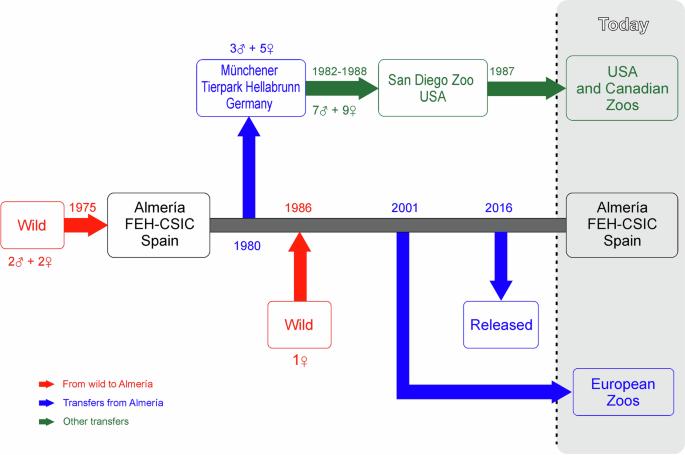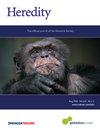在人工繁殖中分析血统以确定遗传多样性的不良损失和管理决策的优先次序:案例研究
IF 3.9
2区 生物学
Q2 ECOLOGY
引用次数: 0
摘要
当防止物种灭绝成为首要任务时,人工繁殖是保护计划的关键组成部分,可以将血统信息记录在种马手册中。我们分析了 1975 年至 2023 年期间库维尔瞪羚种马手册中登记的系谱信息,以(a)评估所实施的交配政策是否成功地保留了当前种群中创始者(1 雄 3 雌)的遗传背景,以及(b)改进未来的管理和育种决策。虽然失去了一个创始雌性的母性贡献,而且整个活种群的平均近亲繁殖率较高(0.305 ± 0.095),但从四个创始雌性开始的种群来看,所采用的育种政策取得了比预期更好的结果。该育种政策成功地将近亲繁殖的个体增长率保持在较低水平(0.047 ± 0.021),而且值得注意的是,在育种计划的最后三十年中,近亲繁殖呈下降趋势,确保了这一高度近亲繁殖种群的生存能力。欧洲和北美动物园之间的个体传播历史造成了北美活体种群的结构和遗传分化。不过,这并没有危及圈养种群的生存能力。通过平均亲缘关系系数,可以识别出基因型代表性不足的个体,这对于规划未来的交配准则,以保持始祖鸟在下一代中的代表性平衡具有重要意义。这项研究强调了保存长期血统信息以监测人工饲养种群遗传多样性变化的重要性,这对于在异地保护计划中实施最佳交配决策和确保其长期生存能力至关重要。本文章由计算机程序翻译,如有差异,请以英文原文为准。


Analysing the pedigree to identify undesirable losses of genetic diversity and to prioritize management decisions in captive breeding: a case study
When prevention of species extinction is the priority, captive breeding is a key component in conservation programmes, allowing the recording of pedigree information in studbooks. The genealogical information registered in Cuvier’s gazelle studbook between 1975 and 2023 was analysed to (a) assess if the implemented mating policy was successful in preserving the genetic background of the founders (1 male:3 females) in the present population, and b) improve future management and breeding decisions. Although the maternal contribution of one founder female was lost and the mean inbreeding of the total live population was high (0.305 ± 0.095), the breeding policy applied produced better results than expected from a population starting from four founders. It was successful in keeping the individual increase in inbreeding low (0.047 ± 0.021), and, notably, the inbreeding tended to decrease during the last three decades of the breeding programme, ensuring the viability of this highly inbred population. Historical dissemination of individuals among the zoos of Europe and North America caused population structuring and genetic differentiation of the live North American population. However, it did not risk the viability of the captive population. The average relatedness coefficients allowed the identification of individuals with underrepresented genotypes, which is relevant to plan future mating guidelines to keep the founders’ representation balanced in the next generations. This study highlights the importance of keeping long-term pedigree information to monitor changes in the genetic diversity of captive populations, which is crucial to implement optimal mating decisions and assuring their long-term viability within an ex situ conservation programme.
求助全文
通过发布文献求助,成功后即可免费获取论文全文。
去求助
来源期刊

Heredity
生物-进化生物学
CiteScore
7.50
自引率
2.60%
发文量
84
审稿时长
4-8 weeks
期刊介绍:
Heredity is the official journal of the Genetics Society. It covers a broad range of topics within the field of genetics and therefore papers must address conceptual or applied issues of interest to the journal''s wide readership
 求助内容:
求助内容: 应助结果提醒方式:
应助结果提醒方式:


